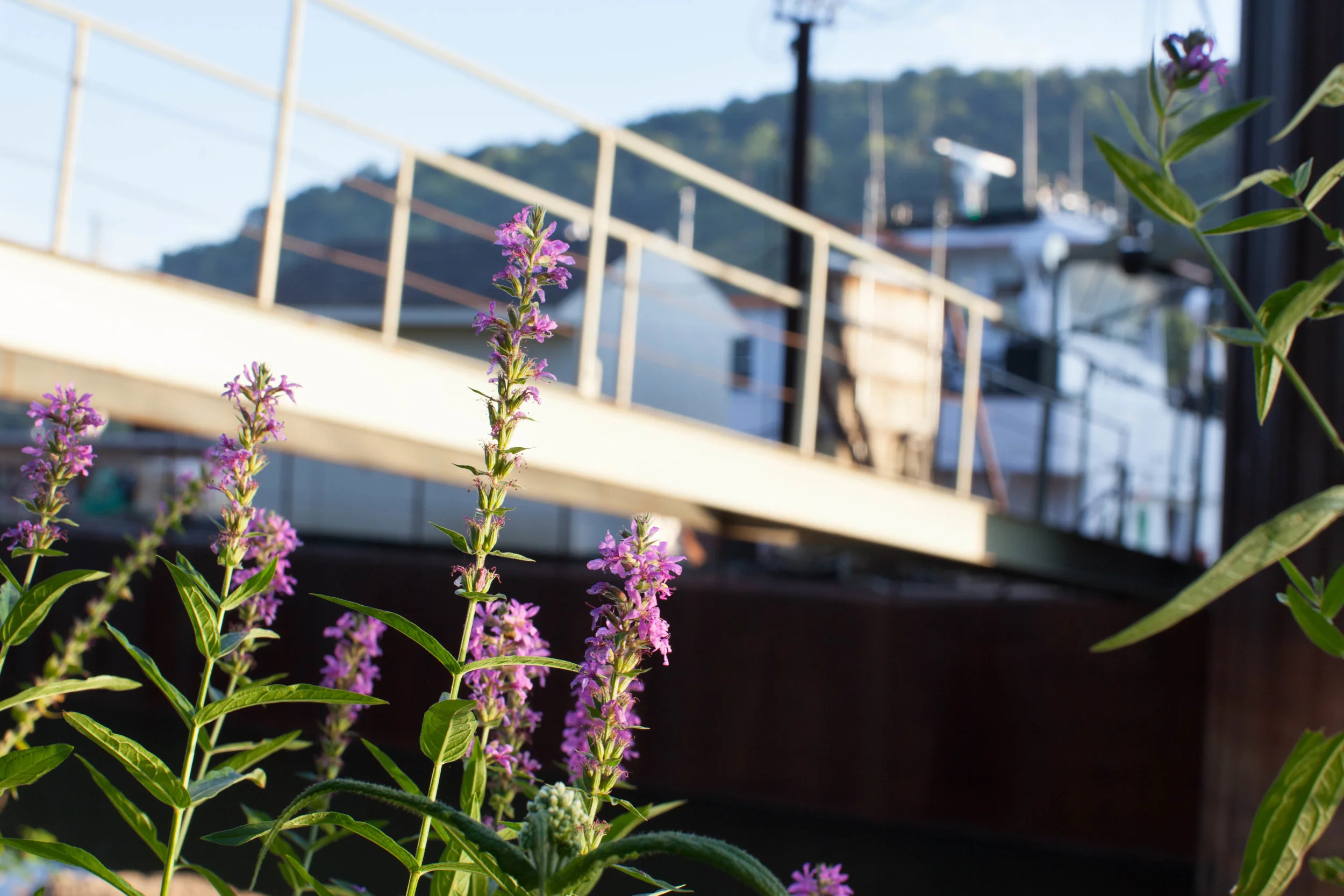Responsibility
Through our network of companies we provide the building blocks for our communities to grow.
We strongly believe that sustainable practices go beyond applying the "green label" to products. We believe that providing the marketplace with quality products using best management practices defines sustainability in its root form.
The durability and strength of the products we produce will help them perform for years to come and reduce the need for early replacement.
The methods of production and transportation we utilize are the most energy efficient in our industry, helping us reduce the cost and carbon footprint.
We believe we are stewards of our creation.
Recycled Content and Regionally Manufactured
Frank Bryan Inc. concrete mixes typically contain a minimum of 20% recycled content by using the following: 1) Pozzolans - Fly ash, ground granulated blast furnace cement (GGBFS), and silica fume in place of portland cement. This can replace up to 65% of the total quantity of cement used. 2) Recovered surplus concrete ordered that is separated back into its constituent components and reused. 3) Recycled water from our surplus concrete reclaimer.
Regionally Manufactured, Extracted, Harvested and Recovered within 500 miles We diligently source all of our materials to come from within 500 miles of our facility. Aggregates are processed from dredging operations in the region. Portland cement and other pozzolans come from plants located within our region.
Recycled Aggregate
We have developed and supplied a variety of concrete mixes to various jobs in the City of Pittsburgh and the surrounding area that have required concrete mixes that utilize recycled materials as a part of the concrete mix. We can use aggregates that have been recycled from previous loads of concrete along with batch water that is recovered during our reclaiming process. Additionally, various by-products and co-products that otherwise would have to be land filled are used in these mixes. Most notably would be flyash - a by-product of coal fired power plants, GGBFS (ground granulated blast furnace slag) - a co-product of steel manufacturing and Silica Fume - a by product of the ferrosilicon metals industry. These materials, generally known as pozzolans, replace as much as 65% of the portland cement in various mix designs. The quality of the concrete is not compromised and in most cases, it is actually enhanced as it relates to specific characteristics required for certain mixes. The use of flyash, GGBFS and Silica Fume, reduces the amount of portland cement required, which in turn reduces the carbon footprint associated with the manufacture of our ready mixed concrete. Many mix designs utilize as much as 80% recycled materials, but they are in limited supply.
Controlled Density Fill Concrete
By designing certain mixes that have a very low compressive strength, this type of concrete become known as CDF. Properties of this material can vary between mixes, but can include characteristics which allow the material to flow readily into excavation trenches or large fill requirements. Additionally, since these mixes do not require select raw materials in order to produce high strength concretes, a wide variety of recycled materials can be used in these type of www.bryanmaterialsgroup.com mixes, including plastics, tire rubber and even styrofoam. By using CDF as a construction fill material, compaction is not necessary to attain a load bearing density. This is of particular significance when backfilling trenches because it is not necessary to put a construction worker in a trench to compact the normal fill materials. We have developed certain specific CDF mixes for use in backfilling utility lines. One mix in particular provides a very high R value for backfilling water lines. This high R value mix can reduce or eliminate the possibility of water lines freezing during winter months. Another mix was developed to encase high voltage electrical lines. This mix actually absorbs heat in the high voltage electrical line which in turn increases the energy carrying capacity of the line, resulting in more efficient electric power and energy transmission.
Aggregate
Our aggregate divisions acquire sand and gravel from the reserves present in rivers of our region. Extensive environmental impact studies are conducted prior to beginning operations to insure a benign impact our aquatic life and habitat. Benefits of river sand and gravel acquisition include the deepening of the river channels for both commercial and recreation navigation. The reservoir capacity of the rivers is also increased which results in the reduction of tangential flow velocities that cause shoreline erosion. Lower flow rates reduce the impacts of highwater events in many areas. Additionally, our river sand and gravel acquisition equipment is among the most efficient in terms of energy requirements. Our on board processing equipment uses less than a quart of fuel for every ton of material produced. We actually utilize less than 1/20 of the fuel consumed by recreation boaters in our region during a working season. (Details on this calculation can be provided as necessary).
Barge Transportation
Since our materials are derived on the river, we utilize barges to transport the sand and gravel to major markets or terminal outlets. Barge transportation of our river sand and gravel utilizes only 10% of the fuel consumed by trucking the material over the same distance. (source: USArmy COE - details can be provided). It would require more than 270 trucks to move the same amount material contained in a single tow of 12 barges on the river. Our utilization of barge transportation reduces the number of trucks on the local roads, highways and bridges. This reduction in truck transportation reduces green house gas emissions, traffic concerns, motorist inconvenience and highway wear and tear. River terminals are strategically located to minimize the distance required to haul our materials by truck to final destinations. Our concrete plant, located in downtown Pittsburgh, services the many construction projects in the immediate metropolitan area, while our river terminal located on Neville Island, utilizes the major highway networks to efficiently reach outlying regions with construction aggregates.






